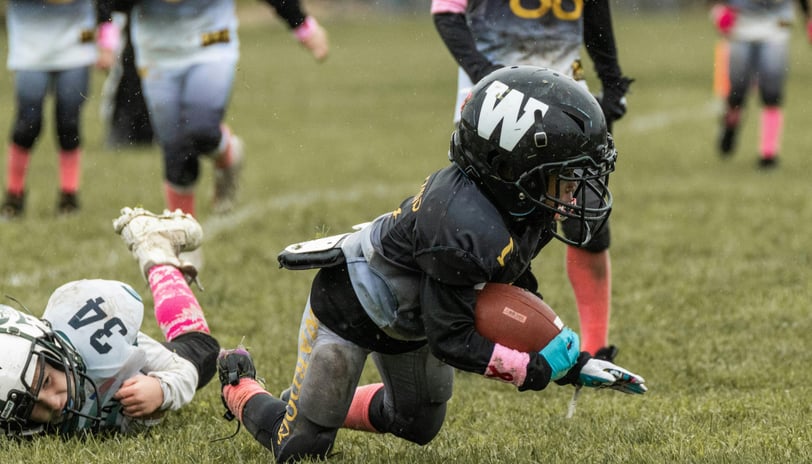Preventing Overuse Injuries in Young Athletes: A Guide to Youth Sports Safety
SPORTS SAFETY
8/25/20243 min read


Youth sports safety has become increasingly important as more children participate in organized athletics. While sports offer numerous benefits for young people, the risk of injuries, particularly overuse injuries, is a growing concern. This article will explore the causes of overuse injuries and provide practical tips for parents, coaches, and young athletes to ensure a safe and enjoyable sports experience.
Understanding Overuse Injuries in Youth Sports
Overuse injuries occur when repetitive stress is placed on bones, muscles, or joints without adequate time for recovery. Unlike acute injuries that happen suddenly, overuse injuries develop gradually over time. In the context of youth sports safety, these injuries are particularly concerning because:
Growing bodies are more susceptible to stress
Young athletes may not recognize or report early symptoms
The pressure to specialize in one sport at an early age can increase injury risk
Common overuse injuries in youth sports include tennis elbow, runner's knee, swimmer's shoulder, little league elbow, stress fractures, and shin splints.
Recognizing the Signs
A crucial aspect of youth sports safety is recognizing the early signs of overuse injuries. Parents, coaches, and athletes should be aware of:
Pain that worsens with activity
Swelling or redness around joints
Changes in form or technique
Decreased interest in practice
Difficulty completing usual routines
If these signs persist, it's essential to seek medical attention promptly.
Best Practices for Preventing Overuse Injuries
Encourage Sport Diversity
One of the most effective strategies for youth sports safety is to encourage children to participate in a variety of sports rather than specializing in one. This approach:
Develops different muscle groups
Reduces repetitive stress on specific body parts
Enhances overall athletic ability
Prevents burnout
Implement Proper Training Techniques
Coaches and trainers play a crucial role in youth sports safety. They should:
Teach correct form and technique
Gradually increase training intensity and duration
Incorporate strength and flexibility exercises
Ensure proper warm-up and cool-down routines
Follow Age-Appropriate Guidelines
Sports organizations often provide guidelines for practice duration and frequency based on age. Adhering to these recommendations is vital for youth sports safety. For example:
Limit weekly and yearly participation time
Ensure at least 1-2 days of rest per week
Allow for an "off-season" to rest and recover
Use Proper Equipment
Ensuring young athletes have the right gear is essential for youth sports safety:
Wear sport-specific shoes that fit properly
Use protective equipment appropriate for the sport
Replace worn-out equipment regularly
Promote Proper Nutrition and Hydration
A balanced diet and adequate hydration are crucial for youth sports safety:
Encourage a diet rich in fruits, vegetables, lean proteins, and whole grains
Ensure athletes stay hydrated before, during, and after activities
Educate about the importance of proper fueling for performance and recovery
Listen to the Athlete
Creating an environment where young athletes feel comfortable expressing discomfort or pain is crucial. Encourage open communication and take complaints seriously.
Regular Health Check-ups
Annual physical examinations can help detect potential issues early and ensure the child is fit for sports participation.
Adequate Rest and Recovery
Proper sleep and rest between practices and games are vital for youth sports safety:
Ensure young athletes get enough sleep each night
Allow for adequate recovery time between intense training sessions
Be mindful of scheduling conflicts that might lead to overtraining
Educate All Stakeholders
Youth sports safety is a shared responsibility. Educate parents, coaches, and athletes about:
The risks of overuse injuries
The importance of proper technique and training
The value of rest and recovery
The signs of potential injuries
Monitor Training Loads
Keep track of an athlete's training volume and intensity. This can help identify potential risks and allow for timely adjustments to prevent overuse injuries.
Conclusion
Youth sports safety, particularly in preventing overuse injuries, requires collaborative effort from parents, coaches, and athletes. By implementing these best practices, we can create an environment where young athletes can thrive, develop their skills, and enjoy their sports experience without the setback of preventable injuries. Remember, the goal of youth sports is not just to create great athletes, but to foster healthy, well-rounded individuals who carry a love for physical activity into adulthood. Prioritizing youth sports safety is key to achieving this goal.
